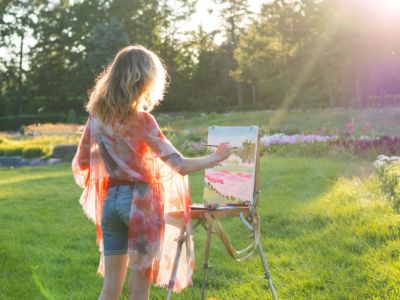How to Paint Plants: Tips on Painting in the Garden
• Take a class in botanical painting or drawing. Classes are often offered by public libraries, gardening groups, nonprofit environmental groups, or departments of forestry or fish and wildlife. Most community colleges offer a variety of non-credit classes at a reasonable cost. • Visit botanical gardens in your region. Most gardens host special events for gardeners and artists, and some have botanical art groups and exhibitions of botanical art. Look online; national botanical gardens frequently offer Internet-based groups and forums. • Don’t limit your work to your own garden. Walk through your neighborhood. Drive through the countryside. Visit public parks, gardens, or landscape features in your area. • Whenever possible, paint in nature, not from photos, magazines, or paintings done by other people. While all are helpful for learning, nothing replaces painting in the garden. • Keep a small sketchbook or a garden journal. Sketch images and jot down textures, smells, weather patterns, pollinators, birds, wildlife, or anything that catches your fancy. • Take photographs of plants and flowers at different times of day, and at various angles and distances. Use the photos to study color, light, and shadows. Pay attention to detail when painting flowers. Look closely at the basic structure of your subject. • Keep a journal to pique your creativity and help you sharpen your observational skills as you learn how to paint plants. • Start with simple subjects, such as leaves, twigs or branches. When it comes to painting flowers, look for blooms with few petals, such as daisies, pansies, or even tulips. • Look at your subject from various angles. A direct view into the center of a plant or flower isn’t always best and can be complicated and difficult to paint. • Set quiet time aside for sketching or painting plants or flowers every day. Practice. Be persistent.
